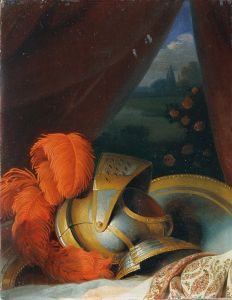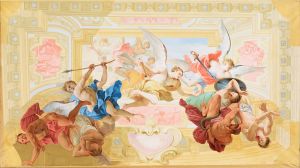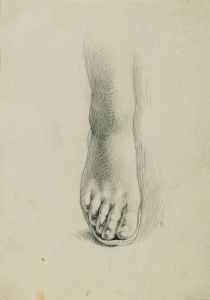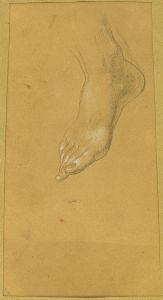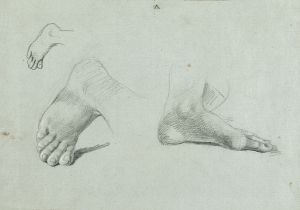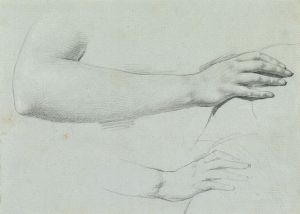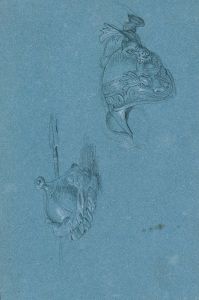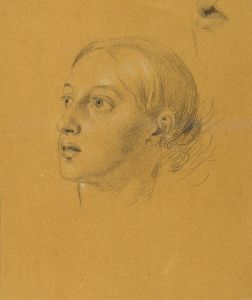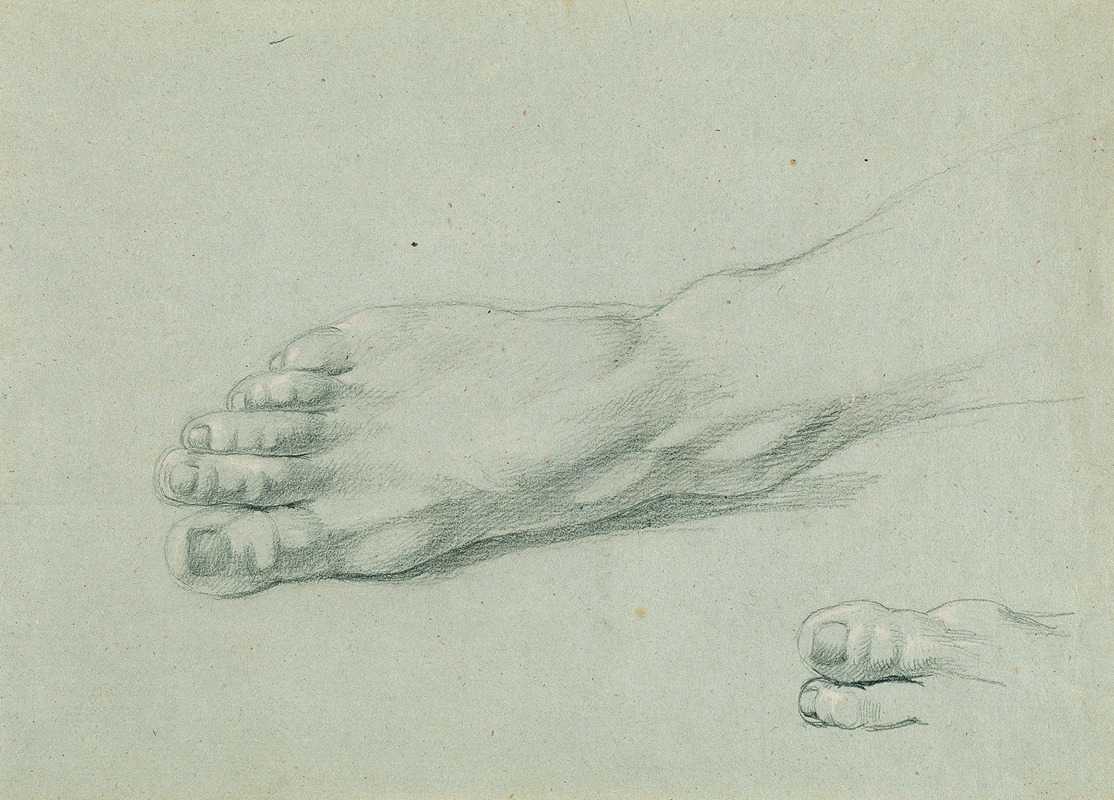
Fußstudie zu ‘Arindal und Daura’
A hand-painted replica of Johann Peter Krafft’s masterpiece Fußstudie zu ‘Arindal und Daura’, meticulously crafted by professional artists to capture the true essence of the original. Each piece is created with museum-quality canvas and rare mineral pigments, carefully painted by experienced artists with delicate brushstrokes and rich, layered colors to perfectly recreate the texture of the original artwork. Unlike machine-printed reproductions, this hand-painted version brings the painting to life, infused with the artist’s emotions and skill in every stroke. Whether for personal collection or home decoration, it instantly elevates the artistic atmosphere of any space.
Johann Peter Krafft was an Austrian painter known for his historical and genre scenes, as well as his portraits. One of his lesser-known works is "Fußstudie zu ‘Arindal und Daura’," which translates to "Foot Study for 'Arindal and Daura'." This piece is a study, meaning it was likely created as a preparatory work for a larger composition or painting that Krafft was planning or executing.
Krafft was born on September 15, 1780, in Hanau, Germany, and later moved to Vienna, where he became an influential figure in the Austrian art scene. He studied at the Academy of Fine Arts in Vienna and was heavily influenced by the Neoclassical style, which is evident in his precise and detailed approach to painting. His works often depicted scenes from literature, history, and mythology, reflecting the Romantic and Neoclassical interests of the time.
The study "Fußstudie zu ‘Arindal und Daura’" is likely connected to a larger narrative or mythological scene, as suggested by the names Arindal and Daura. These names do not directly correspond to well-known figures in classical mythology or literature, which suggests that they might be characters from a lesser-known story or possibly an original composition by Krafft. The focus on a foot study indicates Krafft's attention to anatomical detail and his commitment to accurately rendering the human form, a common practice among artists preparing for more complex compositions.
Krafft's work is characterized by its meticulous attention to detail and its ability to convey emotion and narrative through composition and form. His studies, such as this foot study, would have been crucial in developing the final composition, allowing him to experiment with form, perspective, and anatomy before committing to the final work.
Throughout his career, Krafft received numerous commissions and was recognized for his contributions to the arts in Austria. He was appointed as a professor at the Academy of Fine Arts in Vienna, where he influenced a new generation of artists. His works are held in various collections, including the Belvedere in Vienna, which houses many of his significant pieces.
While "Fußstudie zu ‘Arindal und Daura’" may not be as widely recognized as some of his other works, it represents the foundational skills and meticulous preparation that underpinned Krafft's larger compositions. His studies offer insight into his artistic process and the careful planning that contributed to his success as a painter in the 19th century.





